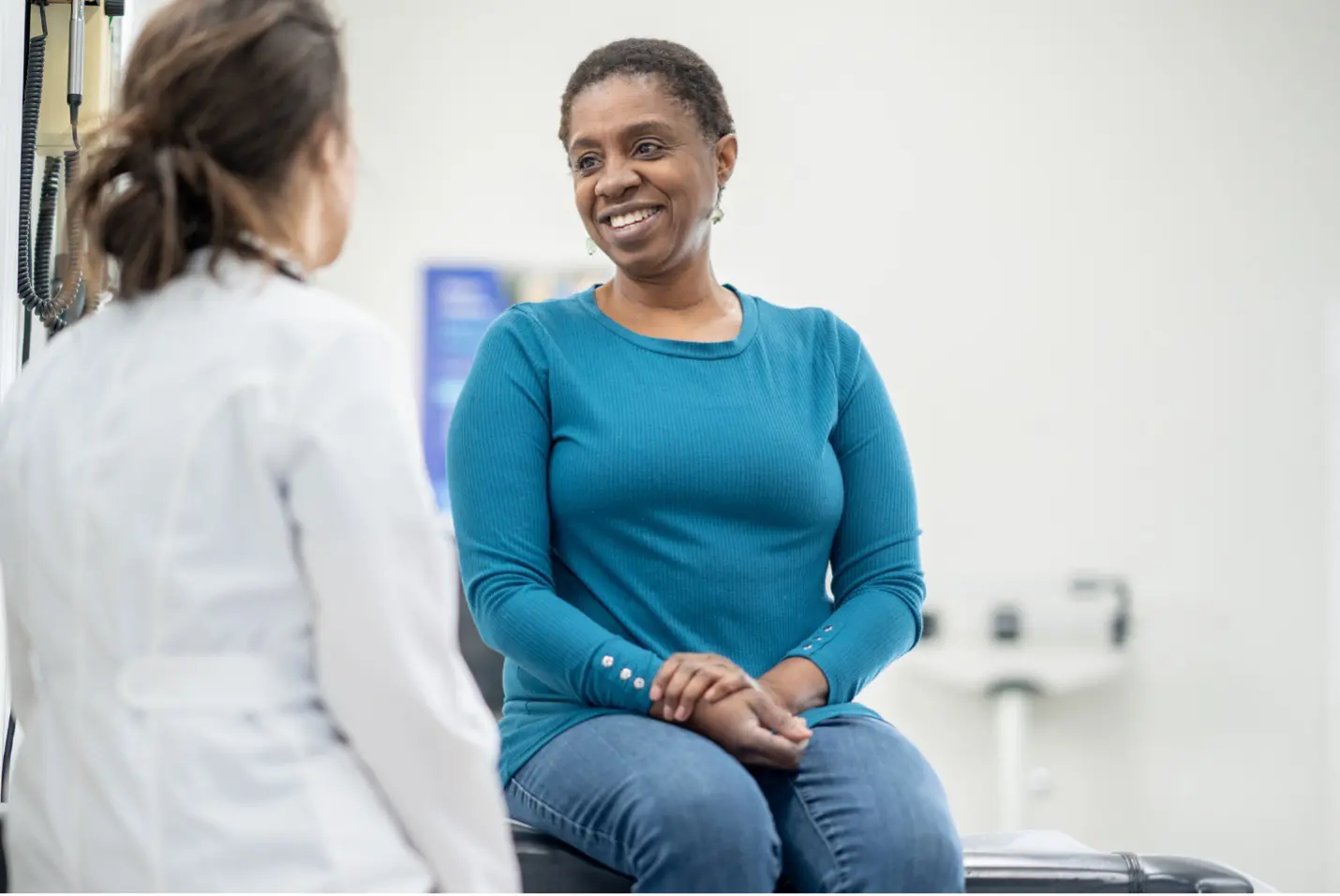If you’ve had a mammogram and your doctor told you your breasts are dense, you may be wondering what exactly that means and whether it changes your risk for breast cancer. Although dense breast tissue is common and might never cause you any issues, it’s important to understand and be prepared for additional screening, if necessary.
You Have Dense Breasts - What Does that Mean?
The term breast density refers to the amount of various types of tissue that make up your breasts. Basically, dense breasts contain more breast (glandular) and connective tissue than fatty tissue.
Dense Breast Causes
There are several reasons why dense breast tissue occurs, and you can’t prevent any of them! Breast density is usually related to both your age and genetic makeup. And, the density of your breasts may change over time, becoming less dense with age.
Some causes of dense breasts in women are:
- Weight: Around 50-60% of females who are at a healthy weight have dense breasts in comparison to 20-30% of females who are obese.
- Age: Around 50-60% of females who are 40-44 years old have dense breasts compared to 20-30% of women ages 70-74.
- Medicines: Hormones can have an influence on breast density. Women taking menopausal hormone therapy (MHT) experience dense breasts more so than normal due to the fact. MHT slows down the process that causes breasts to become less dense. Density can also be reduced by taking Tamoxifen as a breast cancer risk reduction medication.
- Family history: Dense breasts can run in families.
There are four breast density categories ranging from very dense to mostly fatty tissue. The radiologist reading your mammogram test will figure out the best category for describing your breasts. The four different categories of breast density include:
- Very dense: Breasts are very dense, which makes the mammogram test hard to read because the tumors aren’t noticeable around dense tissue.
- Heterogeneous (consistent) density: Breasts with mainly dense tissue distributed evenly around the breasts, making it difficult to notice small tumors surrounding the dense tissue.
- Scattered density: Mostly fatty tissue is in the breasts with scattered dense tissue areas throughout.
- Mostly fatty: Breasts consist of nearly all fatty tissue, which makes irregularities easy to see on mammograms.
What’s the Connection Between Breast Cancer and Breast Density?
Dense breasts increase your chances of breast cancer development. Women who have a high breast density have a greater risk (four to six times the risk) of developing breast cancer than those with more fatty breast tissue. Research also shows that females with dense breast tissue have a greater risk of developing bigger tumors. Although it’s not known the reason for this connection, it’s essential to keep in mind breast density in just one of the risk factors of developing breast cancer. If you have dense breasts, this does not mean you will definitely develop breast cancer in your lifetime.
How Dense Breasts Impact Your Mammogram
A radiologist reads mammogram images to determine if tumors are present. If there are areas that they can't see clearly, more images may be needed. This is because fatty breast tissue will appear on a mammogram as opaque or grey, while fibrous or dense tissue looks white. Although this is an efficient way of determining breast density, tumors and other irregularities also appear white on mammograms, which is why it’s harder to detect abnormalities for women with dense breasts.
Doctors still consider mammograms the most efficient way of screening for breast cancer. However they may suggest a 3D mammogram which improves the radiologist’s ability to tell between breast tissue and any abnormalities.
Other Types of Breast Cancer Screening If You Have Dense Breasts
Mammograms are a very important part of every woman’s regular healthcare program starting at age 40. If your doctor feels the images are inconclusive, especially if you have dense breasts, they may request additional images or other tests. This is so they can get a better look at anything that they’re unsure about on the image.
Common types of breast cancer imaging tests include:
- Breast Tomosynthesis (3-D Mammography): Tomosynthesis will use a few images to generate a 3-D image of your breast rather than the two-dimensional image a traditional mammogram creates. Some women with dense breasts choose to have a 3D mammogram at the outset since they are better able to differentiate breast tissue from a tumor.
- Ultrasound: A breast ultrasound takes images of your breast using sound waves. It’s a non-invasive test that the doctor might use after an irregular mammogram.
- MRI: A breast MRI uses strong magnets and radio waves to generate detailed images of your breast. The MRI might be suggested if you have already received a breast cancer diagnosis to determine how big the tumor is or as part of your screening plan if you’re at a higher risk for breast cancer.
Stay on schedule with your breast cancer screening
Whether you have dense breasts or not, be sure you regularly receive mammograms according to your age. The American Cancer Society offers screening recommendations, but talk to your gynecologist or primary care physician about his or her recommended screening plan for you.




